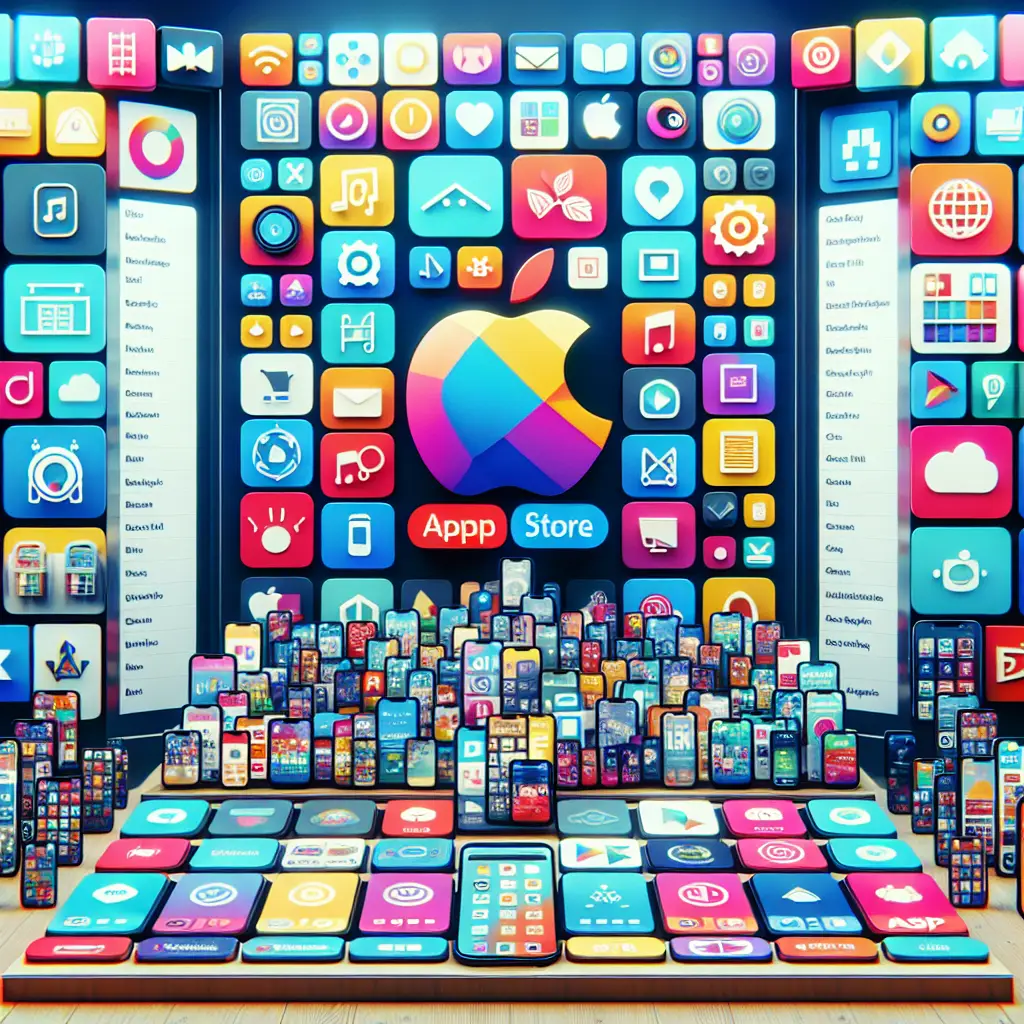Ever since its creation, Apple’s App Store changed the way we perceive software and applications. The last decade witnessed the App Store growing into the most influential marketplace for state-of-the-art digital innovations, sharply shaping the business landscape and consumer trends at large. This churning orbit of apps, developers, and users have facilitated Apple to sustain an unrivaled niche in the industry.
During its initial years, the App Store braved a multitude of challenges and overcome several limitations to offer an unrivaled digital platform. The original App Store began with only 500 applications, a tiny offering compared to current numbers. Despite modest beginnings, it embraced tech advancements and, with precise strategic maneuvering, charted an impressive growth trajectory.
Search engine optimization (SEO) plays a vital role in the success of applications on the App Store. Apple integrated an advanced search algorithm that leverages SEO so that developers can utilize keywords unambiguously linked to their app’s function and utility. This facilitates the search process, thus encouraging consumer engagement and enhancing discoverability amongst huge offerings.
In 2010, iPad’s launch revolutionized App Store offerings, enabling developers to create iPad-specific apps rather than resizing iPhone apps. The iPad’s larger display opened new horizons for game-developers, cementing the changing face of mobile gaming. Games like Angry Birds and Monument Valley, with their innovative gameplay and appealing visual design, became App Store’s darlings and cultural staples, amassing global fame and substantial downloads.
Apple introduced in-app purchases (IAP) in 2009, a feature that offered developers an avenue for sustainable revenue generation. Incorporating IAP in freemium model apps enabled developers to make money off premium content or exclusive bonuses, effectively monetizing user engagement.
App Store’s strategic regulations have shaped the developer ecosystem and framed user expectations. It introduced the concept of app review, an essential filtration process to ensure compliance with Apple’s guidelines about user privacy, security, and decency. This rigorous protocol helped maintain a high-quality standard in the platform’s digital canvas, enhancing the overall user experience.
Moreover, Apple leveraged the global digital revolution, facilitating developers to take their offerings overseas. Now, the App Store is available in 155 countries, hosting localized content to cater to different cultural sensibilities and languages, reaching a wider audience, and generating extensive revenue.
One pivotal aspect of the App Store’s success has been its synergistic relationship with developers. The tech giant introduced the Swift programming language in 2014, simplifying the app development process. Swift, a powerful and intuitive open-source coding language, enabled the creation of reliable, flexible, and creative apps. Additionally, it offered tutorials for aspiring coders, fostering a rich developer ecosystem that widens its app portfolio.
Enhancing discoverability and improving accessibility, iOS 11 introduced a redesigned App Store, dividing game apps and other applications into separate tabs. The ‘Today Tab’ introduced users to a curated list of popular and trending apps, enabling developers to spotlight their creations better.
More recently, Apple introduced the App Store Small Business Program, curtailing its commission from 30% to 15% for small businesses earning up to a million dollars per year. This initiative bolsters smaller companies, fostering diversity and competition on the platform.
Apps like Uber and Instagram, once alien and novel, became phone staples, redefining lifestyle, travel, shopping, and entertainment. In arenas like healthcare, tech prowess combined with intuitive design offered apps like Headspace and MyFitnessPal revolutionized wellness and fitness practices.
The growth of subscription services like Netflix, Spotify, etc., leveraged by Apple’s App Store, facilitated a ‘subscription economy,’ changing consumer patterns and consumption habits. Direct-to-Consumer apps like Glossier and Dollar Shave Club that made a splash in the e-commerce sector owe a substantial part of their growth to app store optimization.
Emphasizing user privacy and safety, Apple introduced stricter data privacy guidelines, emphasizing transparency and user consent for data access. GDPR compliance became a necessity, placing user privacy at the center of the digital conversation.
From optimizing learning experiences amidst global lockdowns through learning platforms like Duolingo and Kahoot, to enabling work-from-home through apps like Zoom and Teams, the Apple App Store has shown remarkable resilience and adaptability throughout its decade-long journey.
The Apple App Store’s pursuit of exceptional quality, driving advancements in tech integration, security, and accessibility, earned it substantial trust and loyalty from its vast user base. Its decade-long history stands as a testament to an ideology rooted in innovation, customer satisfaction, and relentless pursuit of excellence. It remains a beacon of tech evolution, transforming digital business landscapes, and setting the standard for similar marketplaces.
In summary, Apple’s App Store’s decade-long dominance mirrors a carefully curated narrative of innovation, regulation, and customer-centricity. It has thrived through the seismic shifts of the digital landscape and engineered a sustainable economic ecosystem. The App Store treasure-trove encapsulates the essence of modern digital culture, reflecting our societal zeitgeist in its dynamic digital canvas. It remains a beacon of technology advancements, vanguarding the digital future ahead.
Share this content:

